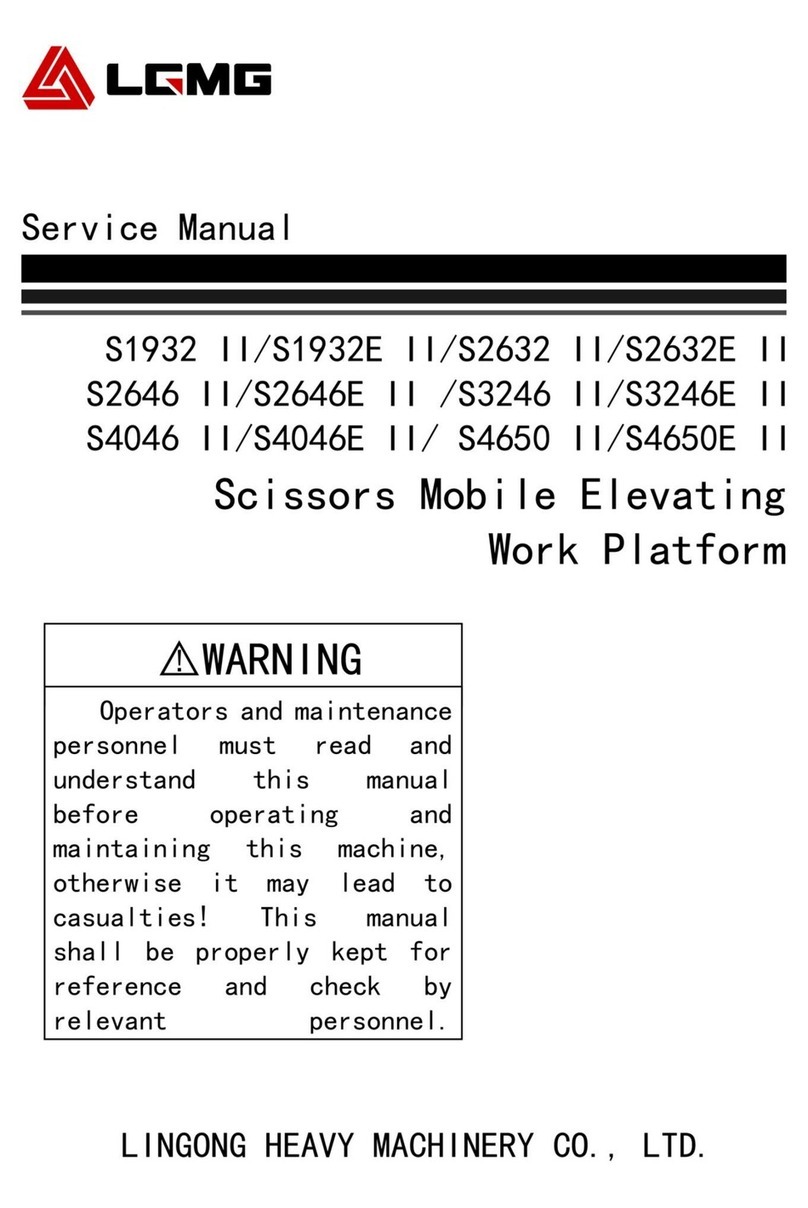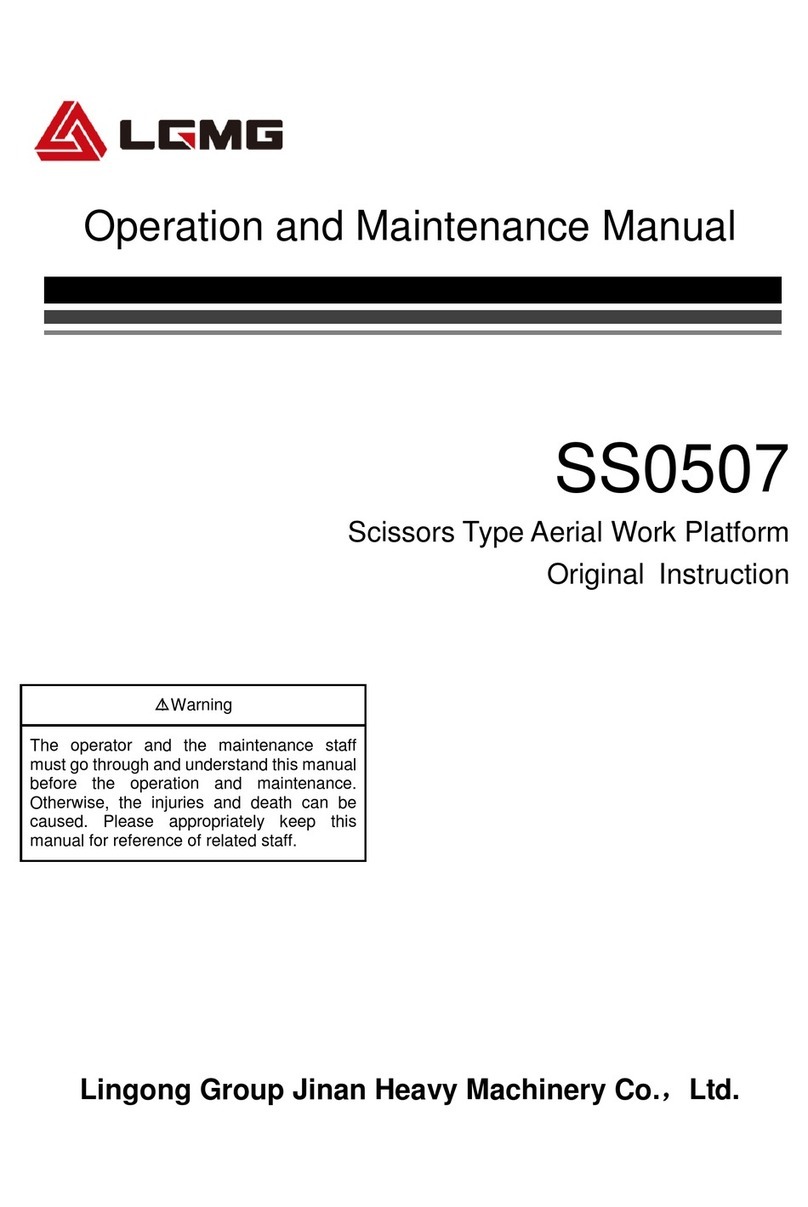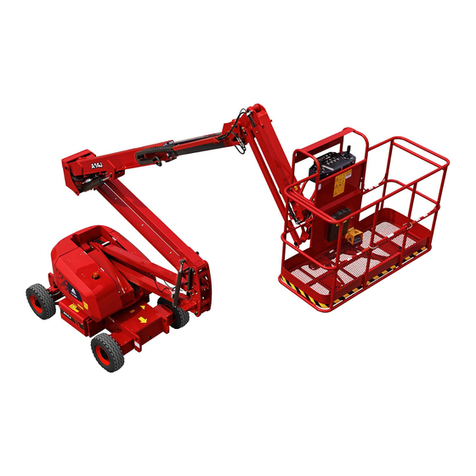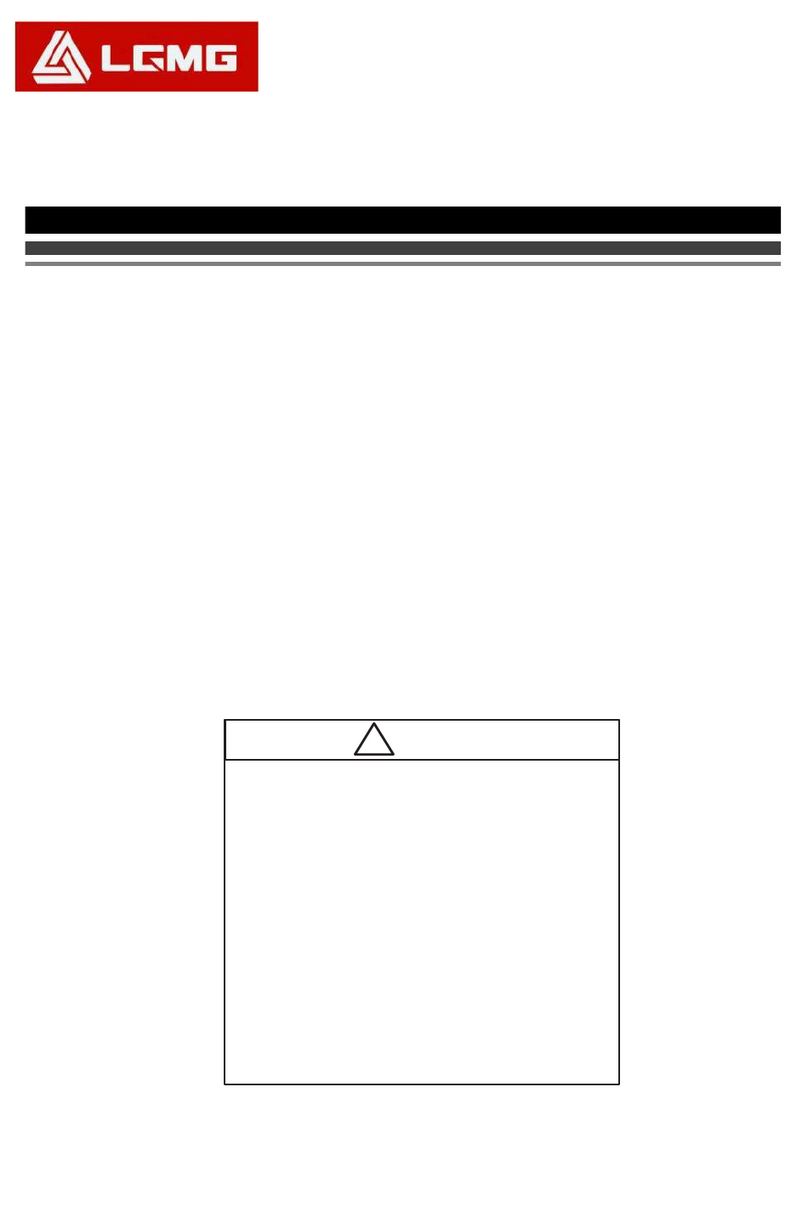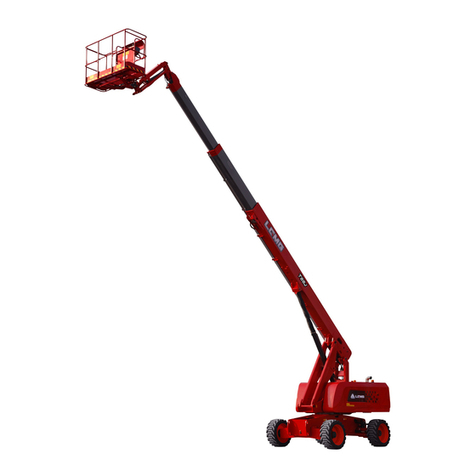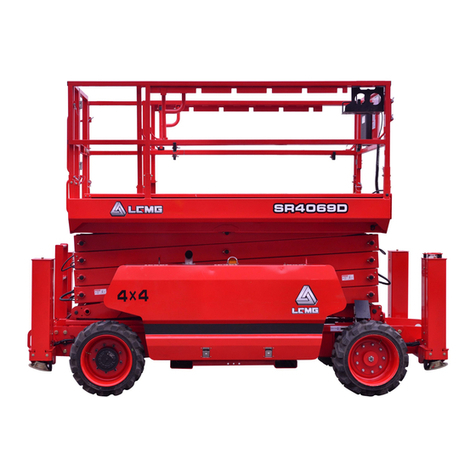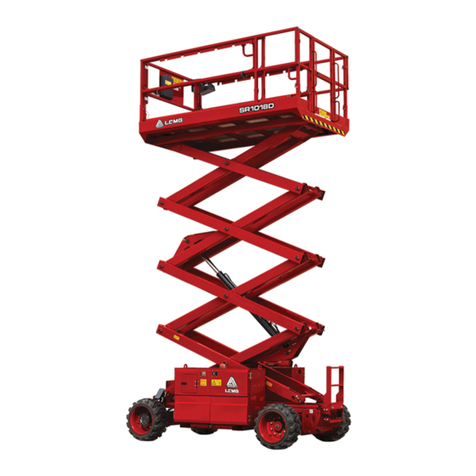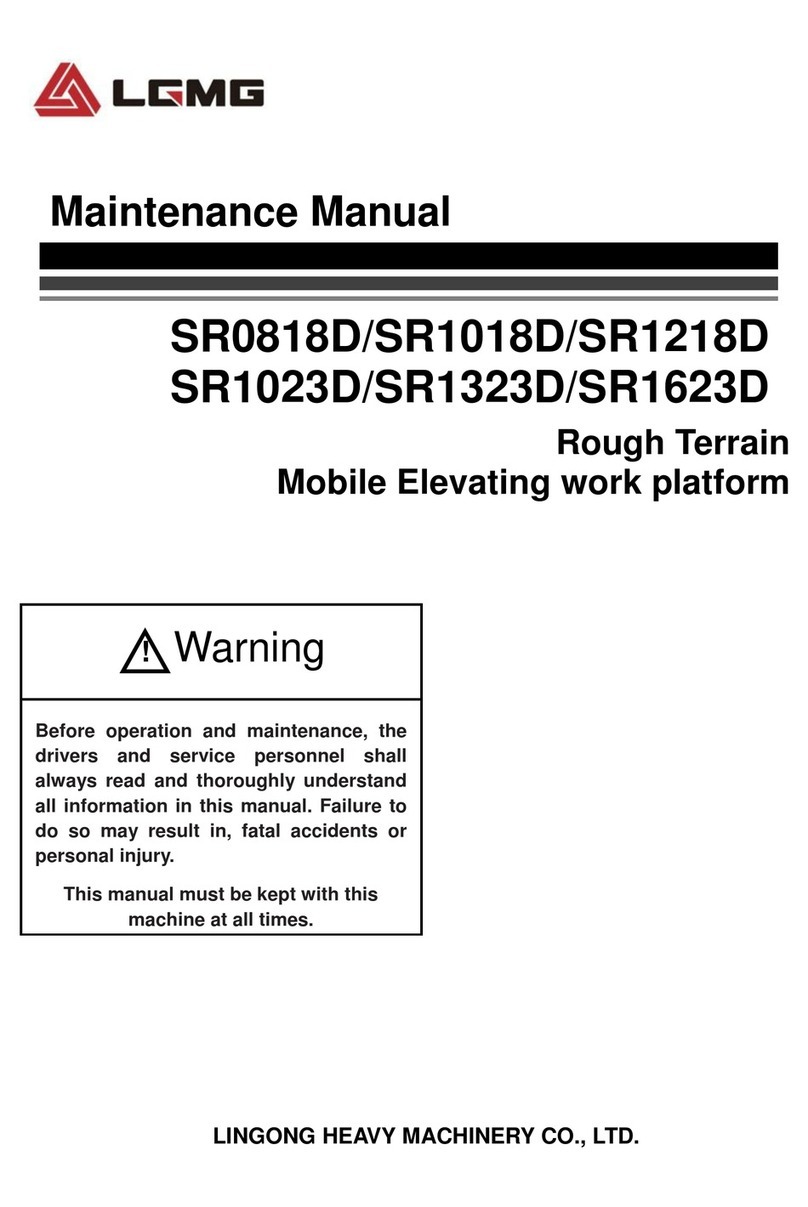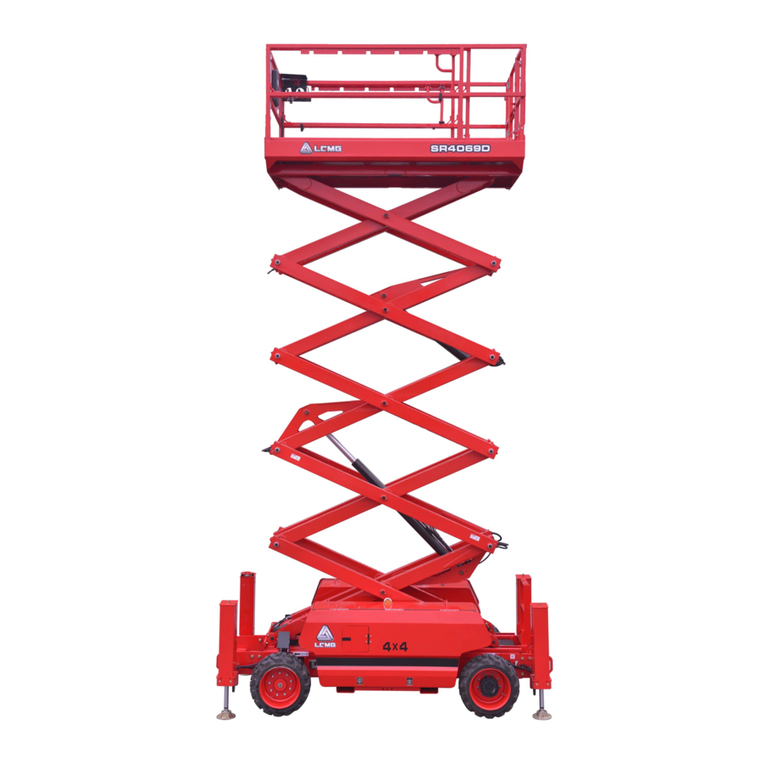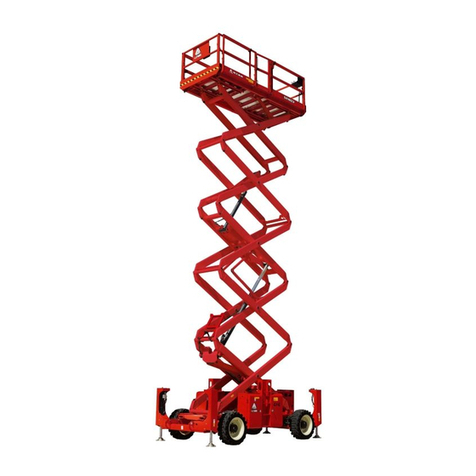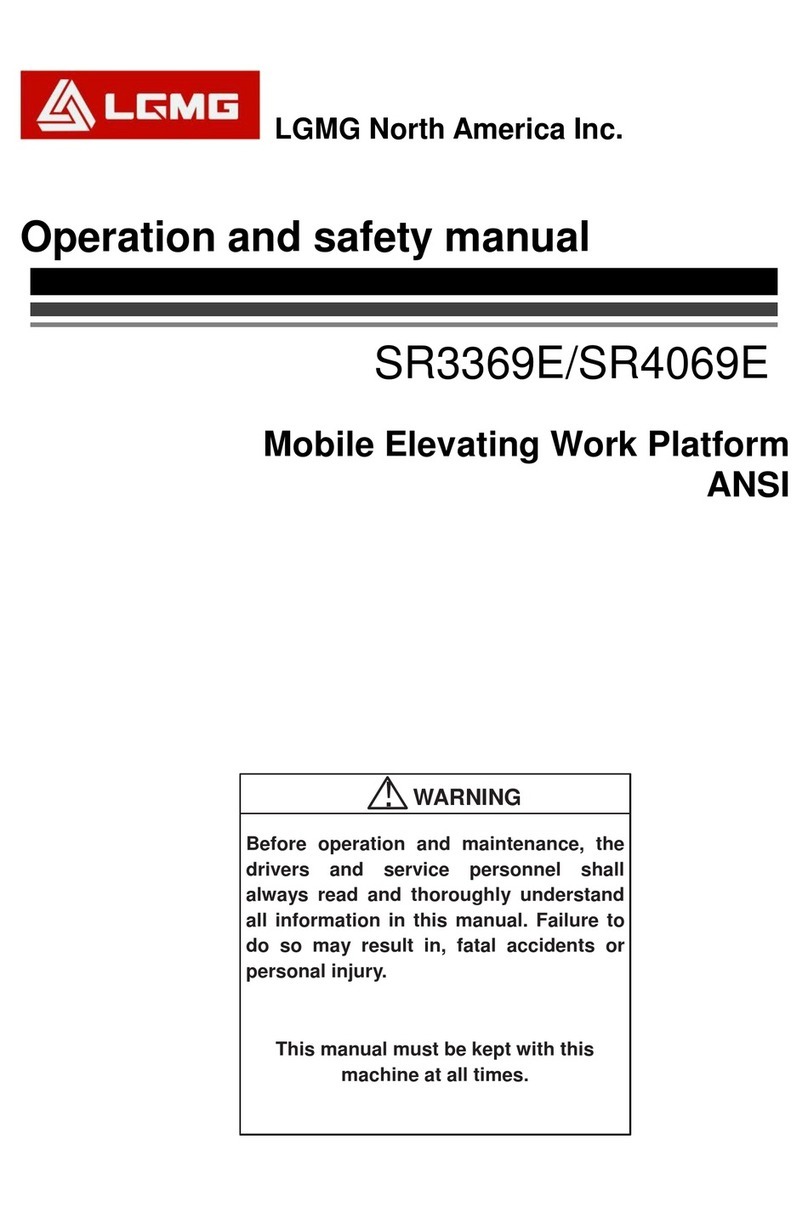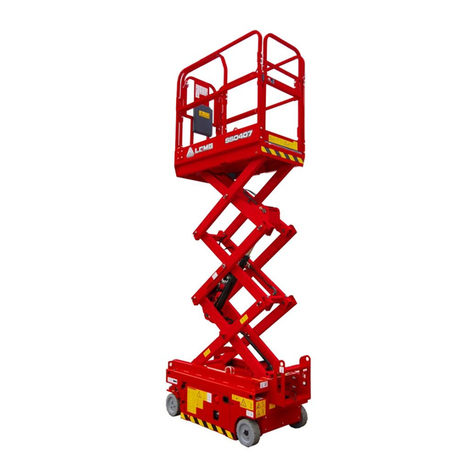
Maintenance Manual of Mast Mobile Elevating Work Platform
3
△
! WARNING: Observe the
regulations
The operator can only perform the
regular maintenance items specified
in this manual.
As required by the manufacturer, the
regular maintenance and inspection
shall be performed by the trained
maintenance technicians.
1.1 Checking the Battery
Keeping the battery in good condition is
crucial for superior performance and
safe operation. Improper electrolyte
level or damaged cable or wiring may
cause parts damage and hazards.
△
! CAUTION: If the machine is
equipped with the hermetically sealed
battery or maintenance-free battery,
inspection of electrolyte level is not
required. Otherwise, the electrolyte level
should be checked.
△
! DANGER
Risk of electric shock:
Live-line working may result in serious
personal injury or even death. Be sure
to remove the ring, watch and other
ornaments before the work.
Risk of personal injury:
The battery electrolyte is corrosive.
Avoid touching the spilled electrolyte
with hands or other parts of the body so
as to avoid injuries. Use soda and water
to neutralize the spilled electrolyte.
△
! CAUTION: The following
inspections should be carried out with
sufficient battery power:
Wear protective clothes and
goggles.
Open the upper cover of the rotary
table.
Ensure that the battery cable is
connected firmly, without corrosion.
Remove the battery cover.
Check the battery electrolyte level.
Add distilled water as needed, and
do not add too much.
Refit the cover.
△
! CAUTION: It is necessary to add
the terminal protector and
corrosion-resistant sealant to protect
the battery terminals and cables against
corrosion.













